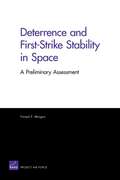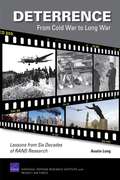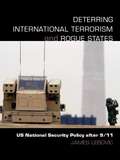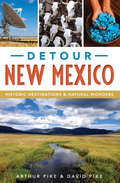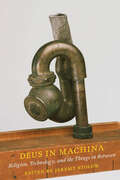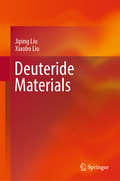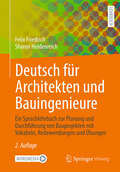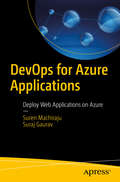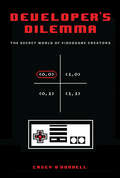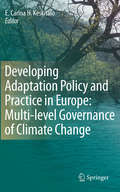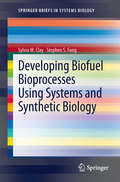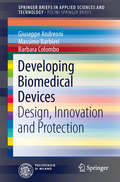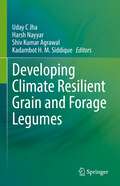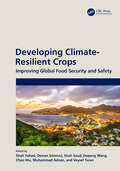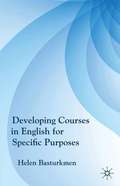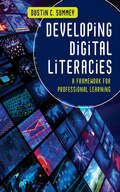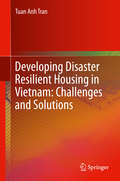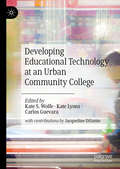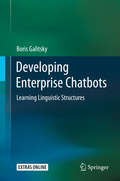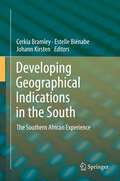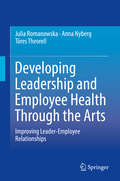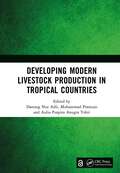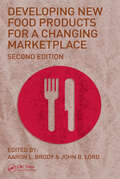- Table View
- List View
Deterrence and First-Strike Stability in Space
by Forrest E. MorganSpace stability appears to be eroding as a growing number of states acquire the ability to degrade or destroy U.S. space assets. The United States needs a coordinated national space deterrence strategy designed to operate on both sides of a potential adversary's cost-benefit decision calculus. Future research will determine the most effective and affordable mix of strategies, policies, and systems for strengthening space deterrence.
Deterrence: Lessons from Six Decades of Rand Deterrence Research
by Austin LongSince its inception six decades ago, the RAND Corporation has been one of the key institutional homes for the study of deterrence. This book examines much of this research for lessons relevant to the current and future strategic environment. It is therefore part intellectual history and part policy recommendation, intended to encourage debate and discussion on how deterrence can best be incorporated into U.S. strategy.
Deterring International Terrorism and Rogue States: US National Security Policy after 9/11 (Contemporary Security Studies)
by James H. LebovicThis new study challenges the widely held view that many current US adversaries cannot be deterred, maintaining that deterrence is not a relic of the Cold War period and that it should shape US policies toward so-called ‘rogue states’ and terror groups. James Lebovic argues that deterrence principles continue to apply, and focuses upon the ‘three pillars’ of the Bush administration’s national security policy: missile defence, which preoccupied the administration until September 11, 2001 pre-emption, which became the US focus with the September 11 attacks and US success in overthrowing the Taliban regime in Afghanistan homeland security, which the administration has portrayed as more a natural response to threat than an aspect of policy that must be reconciled with the other pillars. Deterring International Terrorism and Rogue States asserts that bad offences and defences have been endemic to the current US policy approach, leading US policy makers to pursue policies that require them to do everything without adequate concern for resource trade-offs, overreach, and unintended consequences. This book will be of great interest to students of US foreign policy, national and international security, terrorism and international relations in general.
Detour New Mexico: Historic Destinations & Natural Wonders
by Arthur Pike David PikeNew Mexico’s rich and varied history is easily accessible via detours down obscure backroads and overlooked off-ramps. By taking the road less traveled in any direction, visitors can experience ancient landmarks, cultural heritage sites and striking vistas. Stop at places along the old Route 66, sample the world’s best chiles by the Rio Grande or soak in geothermal water flowing under Truth or Consequences. Ancient dwellings in remote canyons, the town where the first atomic bomb was secretly assembled and the grave of Billy the Kid all lie off the beaten path in the Land of Enchantment. Authors Arthur and David Pike map out these and many more worthwhile points of interest for the curious traveler.
Deus in Machina: Religion, Technology, and the Things in Between
by Jeremy StolowThe essays in this volume explore how two domains of human experience and action—religion and technology—are implicated in each other. Contrary to commonsense understandings of both religion (as an “otherworldly” orientation) and technology (as the name for tools, techniques, and expert knowledges oriented to “this” world), the contributors to this volume challenge the grounds on which this division has been erected in the first place.What sorts of things come to light when one allows religion and technology to mingle freely? In an effort to answer that question, Deus in Machina embarks upon an interdisciplinary voyage across diverse traditions and contexts where religion and technology meet: from the design of clocks in medieval Christian Europe, to the healing power of prayer in premodern Buddhist Japan, to 19th-century Spiritualist devices for communicating with the dead, to Islamic debates about kidney dialysis in contemporary Egypt, to the work of disability activists using documentary film to reimagine Jewish kinship, to the representation of Haitian Vodou on the Internet, among other case studies.Combining rich historical and ethnographic detail with extended theoretical reflection, Deus in Machina outlines new directions for the study of religion and/as technology that will resonate across the human sciences, including religious studies, science and technology studies, communication studies, history, anthropology, and philosophy.
Deuteride Materials
by Jiping Liu Xiaobo LiuThis is the very first book that offers an up-to-date and comprehensive overview on deuteride. It not only includes the concept, existing forms, key characteristics, but also reviews the preparation and characterization technologies and the latest research developments of deuteride. The special properties such as the nuclear properties, isotropic and neutron effect, poisonousness, radioactivity, volume expansion are systematically discussed to build up the sound understanding of the materials. In particular, this work reviews a number of commercial and scientific uses of the materials including nuclear reactors, NMR spectroscopy and medicines. Researchers and industrial professionals in medicine, chemistry, biochemistry, environmental sciences and defense sciences will benefit from this work.
Deutsch für Architekten und Bauingenieure: Ein Sprachlehrbuch zur Planung und Durchführung von Bauprojekten mit Vokabeln, Redewendungen und Übungen
by Sharon Heidenreich Felix FriedrichEin Sprachlehrbuch, das speziell für Architekten, Bauingenieure und verwandte Berufsgruppen aller Nationalitäten konzipiert ist, die ihre deutsche Kommunikationsfähigkeit im beruflichen Kontext verbessern wollen. Das Buch kann sowohl für das Selbststudium als auch kursbegleitend eingesetzt werden. Nachdem in der 1. Hälfte des Buches viele Grundlagen der Bauwirtschaft behandelt werden, orientiert sich die 2. Hälfte an den Leistungsphasen und der Abwicklung von Beispielprojekten. Pro Kapitel werden Fachvokabular, Redewendungen, Kommunikationsformen und auch Grammatik vermittelt. Übungen und Aufgaben mit Lösungen runden das Werk ab.Nach dem Gemeinsamen europäischen Referenzrahmen (GER) für Sprachen entspricht das Lehrwerk einem Niveau von B2/C1.
Deutsch für Architekten und Bauingenieure: Ein Sprachlehrbuch zur Planung und Durchführung von Bauprojekten mit Vokabeln, Redewendungen und Übungen
by Sharon Heidenreich Felix FriedrichEin Sprachlehrbuch, das speziell für Architekten, Bauingenieure und verwandte Berufsgruppen aller Nationalitäten konzipiert ist, die ihre deutsche Kommunikationsfähigkeit im beruflichen Kontext verbessern wollen. Das Buch kann sowohl für das Selbststudium als auch kursbegleitend eingesetzt werden. Nachdem in der 1. Hälfte des Buches viele Grundlagen der Bauwirtschaft behandelt werden, orientiert sich die 2. Hälfte an den Leistungsphasen und der Abwicklung von Beispielprojekten. Pro Kapitel werden Fachvokabular, Redewendungen, Kommunikationsformen und auch Grammatik vermittelt. Übungen und Aufgaben mit Lösungen runden das Werk ab. Neu in der 2. Auflage: Alle Dialoge stehen als Audiodateien zur Verfügung. Durch QR-Codes im Buch können diese abgerufen und direkt angehört werden. Nach dem Gemeinsamen europäischen Referenzrahmen (GER) für Sprachen entspricht das Lehrwerk einem Niveau von B2/C1.
DevOps for Azure Applications: Deploy And Integrate Web Applications On Azure
by Suren Machiraju Suraj GauravDeploy web applications on Azure using DevOps tools. This book gives solutions to real-world Cloud deployment scenarios which will enable you to become adept in DevOps work for Azure.You'll start by seeing an overview of DevOps for Azure deployments where you will also survey the available tools, including Octopus Deploy and TeamCity. Here, you will learn how to use TeamCity as a CI tool and Octopus Deploy as release-management and CD software to get your package deployed on Azure Web Application. Next, the authors demonstrate using the Microsoft Visual Studio Team Services (VSTS) integrated developer platform. Finally, you will go through some real-world scenarios using DevOps tools to deploy web applications on Azure. To do this, you will create resources in Azure and integrate with an open source buildout.After reading this book, you will be ready to use various tools in a DevOps environment to support an Azure deployment.What You Will LearnCarry out a survey of DevOps toolsBuild a DevOps solution using standalone DevOps tools – TeamCity and Octopus DeployUse an integrated DevOps platform – VSTSBuild out an Azure deployment using open source code and VSTSWho This Book Is ForDevelopers and release engineers. Also, project managers will find it useful to understand the workflow in DevOps.
Developer's Dilemma: The Secret World of Videogame Creators (Inside Technology)
by Casey O'DonnellAn examination of work, the organization of work, and the market forces that surround it, through the lens of the collaborative practice of game development.Rank-and-file game developers bring videogames from concept to product, and yet their work is almost invisible, hidden behind the famous names of publishers, executives, or console manufacturers. In this book, Casey O'Donnell examines the creative collaborative practice of typical game developers. His investigation of why game developers work the way they do sheds light on our understanding of work, the organization of work, and the market forces that shape (and are shaped by) media industries. O'Donnell shows that the ability to play with the underlying systems—technical, conceptual, and social—is at the core of creative and collaborative practice, which is central to the New Economy. When access to underlying systems is undermined, so too is creative collaborative process. Drawing on extensive fieldwork in game studios in the United States and India, O'Donnell stakes out new territory empirically, conceptually, and methodologically. Mimicking the structure of videogames, the book is divided into worlds, within which are levels; and each world ends with a boss fight, a “rant” about lessons learned and tools mastered. O'Donnell describes the process of videogame development from pre-production through production, considering such aspects as experimental systems, “socially mandatory” overtime, and the perpetual startup machine that exhausts young, initially enthusiastic workers. He links work practice to broader systems of publishing, manufacturing, and distribution; introduces the concept of a privileged “actor-intra-internetwork”; and describes patent and copyright enforcement by industry and the state.
Developing Adaptation Policy and Practice in Europe: Multi-level Governance of Climate Change
by E. Carina KeskitaloMitigation will not be sufficient for us to avoid climate change and we will need to adapt to its consequences. This book targets the development of adaptation policy in European countries with different relations between central and regional/local government.
Developing Biofuel Bioprocesses Using Systems and Synthetic Biology
by Sylvia M. Clay Stephen S. FongAdvances in technological and analytical methods have fostered rapid growth of systems biology and synthetic biology. There continues to be rapid changes and discoveries in both fields with a small number of recent peer-reviewed reviews indicating some of the relationships between systems biology and synthetic biology. This proposed SpringerBrief will cover core concepts of systems biology and synthetic biology and illustrate the implementation of associated research methodologies for an integrated approach to specifically address engineering microorganisms for biofuel production.
Developing Biomedical Devices
by Giuseppe Andreoni Massimo Barbieri Barbara ColomboDuring the past two decades incredible progress has been achieved in the instruments and devices used in the biomedical field. This progress stems from continuous scientific research that has taken advantage of many findings and advances in technology made available by universities and industry. Innovation is the key word and in this context legal protection and intellectual property rights (IPR) are of crucial importance. This book provides students and practitioners with the fundamentals for designing biomedical devices and explains basic design principles. Furthermore, as an aid to the development of devices and products for healthcare, it presents a brief description of the human body, covering anatomy and physiology, that will assist the reader in understanding the origin of biosignals, their significance and the technology to be used in their measurement. Issues concerning IPR and protections are also fully discussed, with examples and opportunities for IPR exploitation.
Developing Climate Resilient Grain and Forage Legumes
by Harsh Nayyar Kadambot H. M. Siddique Uday C Jha Shiv Kumar AgrawalThis edited book covers all aspects of grain legumes including negative impact of abiotic and biotic stresses under the changing global climate. It discusses the role of various subject disciplines ranging from plant breeding, genetics, plant physiology, molecular biology, and genomics to high-throughput phenotyping and other emerging technologies for sustaining global grain and fodder legume production to alleviate impending global food crises. The book offers strategies to ensure plant-based dietary protein security across the globe. It covers all major commercial legume crops used as food, feed and fodder. This book is targeted to graduate and postgraduate students, researchers, progressive farmers and policymakers to inform them of the importance of cultivating grain and fodder legumes for future global food and nutritional security and for maintaining sustainable ecosystem.
Developing Climate-Resilient Crops: Improving Global Food Security and Safety (Footprints of Climate Variability on Plant Diversity)
by Shah FahadDeveloping Climate-Resilient Crops: Improving Global Food Security and Safety is timely, as the world is gradually waking up to the fact that a global food crisis of enormous proportions is brewing. Climate change is creating immense problems for agricultural productivity worldwide, resulting in higher food prices. This book elucidates the causative aspects of climate modification related to agriculture, soil, and plants, and discusses the relevant resulting mitigation process and also how new tools and resources can be used to develop climate-resilient crops. Features: Addresses the limits of the anthropogenic global warming theory advocated by the Intergovernmental Panel on Climate Change Presents the main characters (drought tolerance, heat tolerance, water-use efficiency, disease resistance, nitrogen-use efficiency, nitrogen fixation, and carbon sequestration) necessary for climate-resilient agriculture Delivers both theoretical and practical aspects, and serves as baseline information for future research Provides valuable resource for those students engaged in the field of environmental sciences, soil sciences, agricultural microbiology, plant pathology, and agronomy Highlights factors that are threatening future food production
Developing Courses in English for Specific Purposes
by Helen BasturkmenPresented in two parts, this book firstly introduces core considerations in ESP course development drawing on examples from a wide range of ESP and EAP courses. Secondly four case studies show how experienced ESP teachers and course developers went about developing courses to meet the needs of their particular learners.
Developing Digital Literacies: A Framework for Professional Learning
by Dustin C. SummeyTurn teachers—and students—into tech-savvy digital citizens! When teachers harness technologies and digital resources, they build upon their teaching expertise and change the way students learn. With this comprehensive job-embedded professional development program, you will help K–12 teachers incorporate digital literacies into their classroom practice. Features include: A modular, adaptable framework that capitalizes on existing personnel and resources Instructions on developing Personal Learning Networks (PLNs) for applying digital literacies in the classroom Tips for maximizing teacher buy-in Technology-related supports for schoolwide curriculum integration A companion website with electronic planning and implementation materials, sample instructional tools, and links to resources
Developing Disaster Resilient Housing in Vietnam: Challenges and Solutions
by Tuan Anh TranThis book provides a comprehensive understanding on disaster resilient housing within the Vietnam context particularly and the developing world generally. The book has identified the root causes of housing vulnerability, restrictions to safe housing development, concepts of disaster resilient housing, key issues/factors implementers and building designers need to consider, and ways of achieving resilient housing outcomes in actual design projects. The design and development of disaster resilient housing has been framed into three main themes: (i) community consultation, (ii) the role of built-environment professionals and (iii) design responses for resilience. To achieve these themes, there is a variety of contextual and intervening conditions that need to be addressed and met to provide an enabling environment for promoting disaster resilient housing. These three themes are among the most arguable issues in recent debates and discussions, academically and practically, regarding disaster risk reduction and safe housing development. In addition, this book also provides the evidence-based design framework for disaster resilient housing upon which design ideas and solutions for safe and resilient housing can be generated and shaped.
Developing Educational Technology at an Urban Community College
by Jacqueline DiSantoThis book uses a mix of personal narratives, anecdotal evidence, and research-based findings to tell the story of a small, urban community college’s efforts to develop and nurture a Community of Practice (CoP) that would galvanize the campus’ adoption of Educational Technology. Located in one of the poorest congressional district in the United States, Hostos Community College, a Hispanic-serving institution and part of the City University of New York (CUNY), has a unique history rooted in activism, advocacy, and community outreach, and has built a reputation for technology innovation. This book is a collection of writing from faculty and staff members whose decades of experience integrating technology into the classroom pre-dates many of the official initiatives now in place at CUNY.
Developing Enterprise Chatbots: Learning Linguistic Structures
by Boris GalitskyA chatbot is expected to be capable of supporting a cohesive and coherent conversation and be knowledgeable, which makes it one of the most complex intelligent systems being designed nowadays. Designers have to learn to combine intuitive, explainable language understanding and reasoning approaches with high-performance statistical and deep learning technologies. <p><p> Today, there are two popular paradigms for chatbot construction: <p> 1. Build a bot platform with universal NLP and ML capabilities so that a bot developer for a particular enterprise, not being an expert, can populate it with training data; <p> 2. Accumulate a huge set of training dialogue data, feed it to a deep learning network and expect the trained chatbot to automatically learn “how to chat”. <p> Although these two approaches are reported to imitate some intelligent dialogues, both of them are unsuitable for enterprise chatbots, being unreliable and too brittle. <p> The latter approach is based on a belief that some learning miracle will happen and a chatbot will start functioning without a thorough feature and domain engineering by an expert and interpretable dialogue management algorithms. <p> Enterprise high-performance chatbots with extensive domain knowledge require a mix of statistical, inductive, deep machine learning and learning from the web, syntactic, semantic and discourse NLP, ontology-based reasoning and a state machine to control a dialogue. This book will provide a comprehensive source of algorithms and architectures for building chatbots for various domains based on the recent trends in computational linguistics and machine learning. The foci of this book are applications of discourse analysis in text relevant assessment, dialogue management and content generation, which help to overcome the limitations of platform-based and data driven-based approaches. <p> Supplementary material and code is available at https://github.com/bgalitsky/relevance-based-on-parse-trees
Developing Geographical Indications in the South: The Southern African Experience
by Cerkia Bramley Estelle Bienabe Johann KirstenThis book contributes to the literature on Geographical Indications (GIs) by providing key theoretical reflections from a five-year review process on the potential of GIs for agri-food products in Southern Africa. The contributors reflect on diverse GI processes and dynamics which operate at the local, national and international levels, thus enriching the understanding of GI dynamics and of the variety of policy options available for GI protection in Southern countries. Following a discussion of the legal framework and governance of national GI schemes in Southern countries, the book emphasizes the main dimensions underlying the development of GIs and their potential for enhancing sustainable rural development and market access in particular. This provides the structure for the chapters that build on the different experiences of Southern African industries that have embarked on GI strategies. The book includes chapters on designing an appropriate legal framework and governance system for the development of GIs in Southern countries.
Developing Leadership and Employee Health Through the Arts
by Töres Theorell Anna Nyberg Julia RomanowskaThis book examines the problems that a "laissez faire" attitude from managers can create in the workplace, as well as the ensuing illness such problems may cause among employees. The book offers new ideas for dealing with these problems and proposes the use of cultural experiences as an active component in leadership development programmes for managers. It presents the findings from a randomized trial to show how cultural experiences can be deployed, and what the effect on employees is. The book discusses health-promoting leadership and key components in cultural activities for the benefit of workplaces from several points of view, offering a historical, social, psychological, biological, educational and organizational perspective. Finally, it presents new theories on empathy in managers, and on employee effects of good/bad changes in manager behaviour.
Developing Markets for Agrobiodiversity: Securing Livelihoods in Dryland Areas (Earthscan Research Editions)
by Alessandra Giuliani Bioversity International�This wonderful book demonstrates how rural livelihoods - as well as diets, health and ways of life - are enhanced by the so-called �neglected and underutilized plant species� which, in the book�s Syrian case study, include such deliciously interesting things as capers, laurel, jujube and figs. Using value chain analysis the author illuminates the opportunities for strengthening arid land economies with attention to such species, while simultaneously maintaining the diversity and integrity of those plant genomes, landscapes and cultures. And keeping the world worth tasting.� KEN WILSON, EXECUTIVE DIRECTOR OF THE CHRISTENSEN FUND �Alexandra Giuliani delivers a convincing and very practical account of how biodiversity products derived from neglected and underutilized plant species enter the markets in Syria. By highlighting the value of these plant products for the family income and health status of marginal farmer families in rural drylands and semi-arid areas, she brings the message home as to why it is so important to maintain biodiversity of the genetic resources not by protection alone, but rather through their judicious use.� KATHARINA JENNY, SENIOR ADVISOR, FEDERAL DEPARTMENT OF FOREIGN AFFAIRS, SWISS AGENCY FOR DEVELOPMENT AND COOPERATION Just four crops - maize, potatoes, rice and wheat - provide more than 90 per cent of the world�s food. Old varieties of even these crops are disappearing as farmers and consumers strive for more uniformity in food products. This in turn affects less obvious elements, such as insects that play a role in pollinating plants or controlling pests and the soil organisms that help plants extract nutrients from the soil. Also, farmers need a broad base of agrobiodiversity to be able to respond and adapt to environmental changes and to improve their production. This is especially important in the face of climate change and changing economic and political pressures. This book from Bioversity International describes a study conducted in Syria of how communities are developing markets for local products derived from neglected and underutilized plants. Based on concrete case studies, the data and processes documented in this book show the potential of biodiversity to make a significant contribution to livelihood security in communities that inhabit difficult environments with unique resources. The study also highlights the importance of local cultural knowledge and institutions in sustainable development of biodiversity markets. Published with Bioversity International.
Developing Modern Livestock Production in Tropical Countries: Proceedings of the 5th Animal Production International Seminar (APIS 2022), Malang, Indonesia, 10 November 2022
by Danung Nur Adli Muhammad Pramujo Anugra Yekti, Aulia PuspitaThe Animal Production International Seminar (APIS) is the first international conference held by the Faculty of Animal Science, Universitas Brawijaya. APIS was held for the first time in 2010 and was repeated every three years. In 2022, the 5th APIS was organized as an online meeting. The Faculty of Animal Science, Universitas Brawijaya, is optimistic that the results of the 5th APIS will just be as successful as the 4th APIS in 2019. The theme of 5th APIS was "Developing Modern Livestock Production in Tropical Countries". The 5th APIS discussed matters related to strategies for developing modern livestock production in several tropical countries. The participants of 5th APIS, including keynote speakers and invited speakers, are from various countries (tropical and sub-tropical). These proceedings present the selected papers from the 5th APIS conference.
Developing New Food Products for a Changing Marketplace
by Aaron L. Brody John B. LordWritten by world class authorities, this volume discusses formulation, sensory, and consumer testing, package design, commercial production, and product launch and marketing. Offering the same caliber of information that made the widely adopted first edition so popular, the second edition introduces new concepts in staffing, identifying and measuring consumer desires, engineering scale-up from the kitchen, lab, or pilot plant; and generating product concepts. Applying insights from real life experience, contributors probe the retail environment, covering optimization, sensory analysis, package design, and the increasingly important role of the research chef or culinologist in providing the basic recipe.
